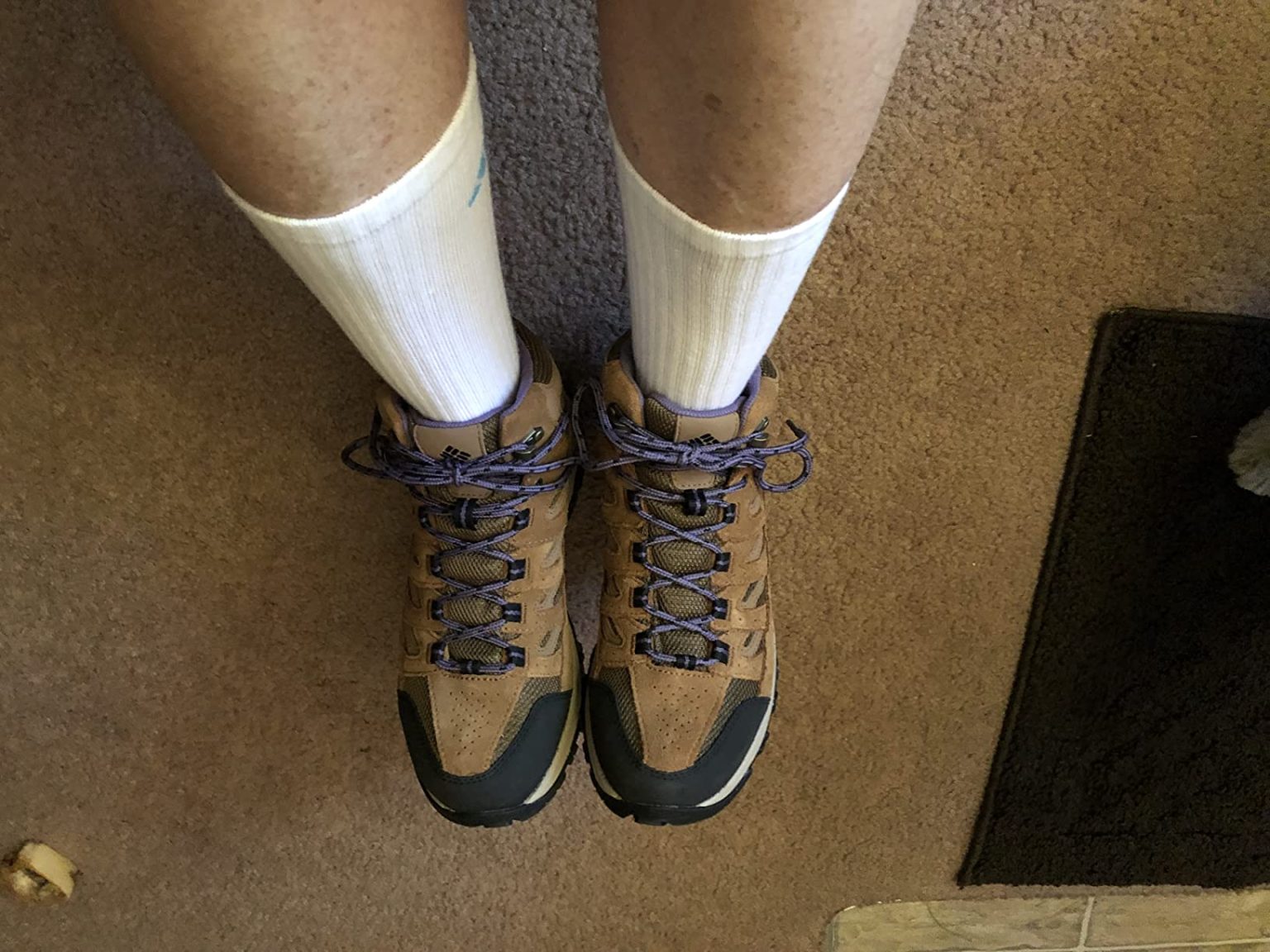Between work, weekend adventures, and everything in between, we need hiking boots that can actually keep up with our lives. Last month, my old Timberlands finally gave up after years of faithful service, and I was fed up with uncomfortable hiking boots that promise the world but deliver blisters. Sarah here, and after dealing with yet another equipment failure right before a planned Colorado trip, I was determined to find a hiking boot that could handle real-world demands. That’s why I spent 8 weeks putting the Columbia Women’s Crestwood Mid Waterproof through every test I could imagine. Here’s the honest truth about whether these $80 boots can deliver.
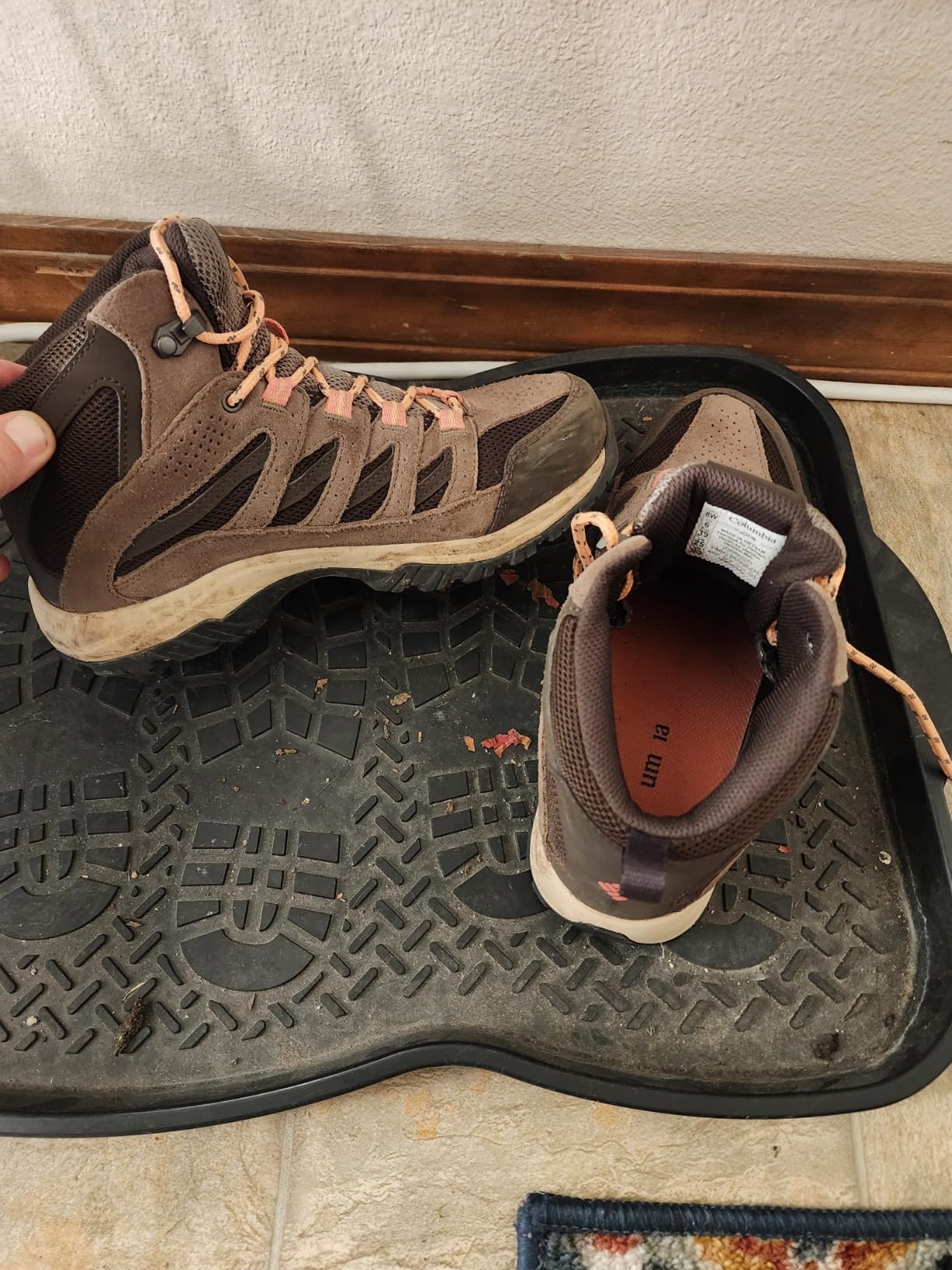
Technical Specifications
- 💰 Price: $80 ()
- ⚖️ Weight: 1.8 lbs (women’s size 8)
- 🧪 Midsole technology: Techlite lightweight cushioning
- 👟 Upper material: Leather, suede, and mesh combination
- 💧 Waterproof system: Omni-Tech breathable membrane
- 🦶 Sole: Omni-Grip non-marking rubber
- 🥾 Style: Mid-height ankle support
- 🎯 Best for: Day hiking, trail walking, outdoor work
- ⏱️ Testing period: 8 weeks, 25+ hiking sessions, 150+ miles
Design, Build Quality & Real-World Performance
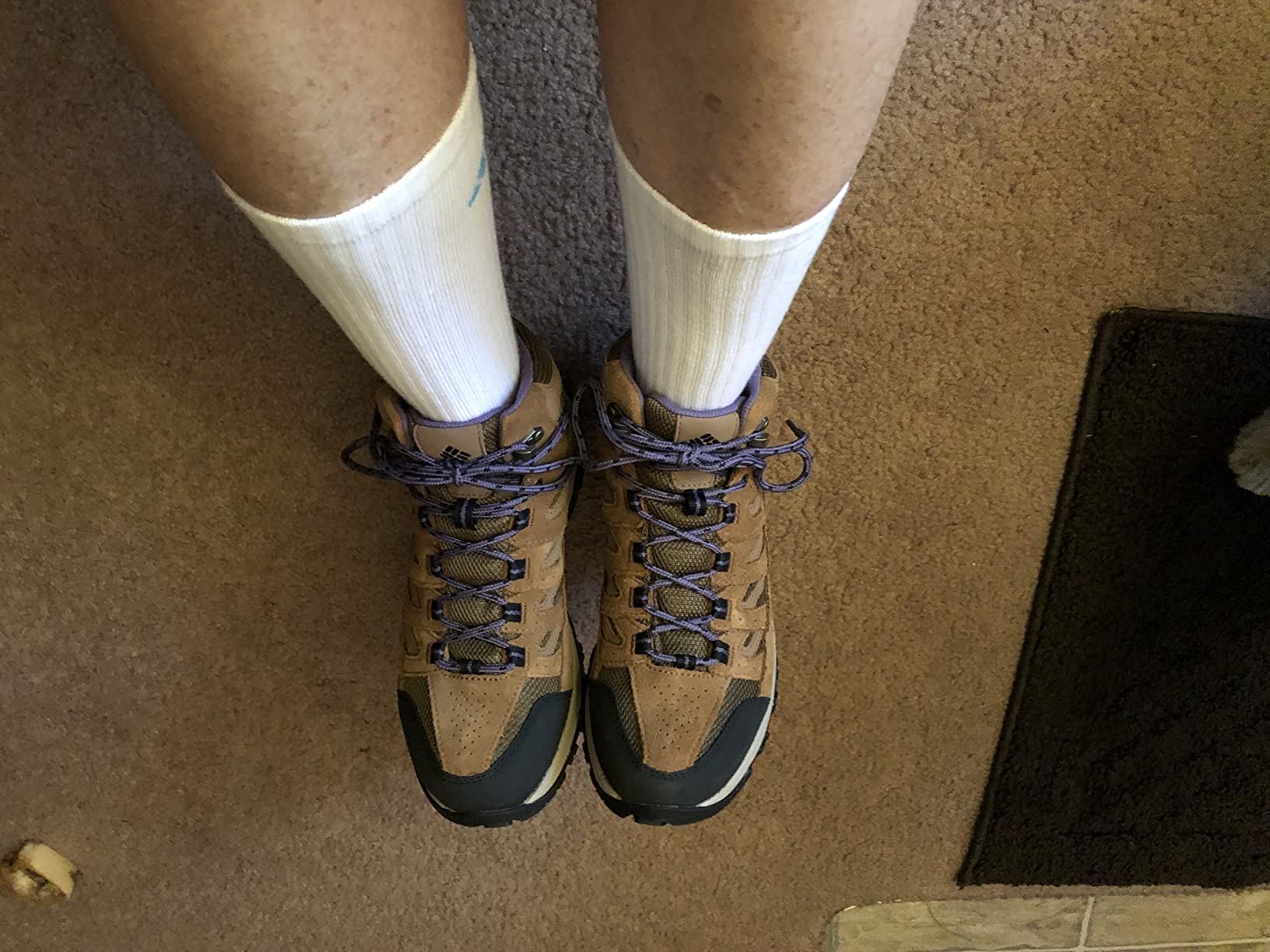
Right out of the box, the Crestwood Mid strikes a nice balance between rugged hiking boot and approachable everyday wear. The combination of suede leather and mesh gives these boots a more refined look than some of the chunky, intimidating hiking boots on the market. I particularly appreciate the subtle color options – the brown and tan colorway I tested feels versatile enough for both trail adventures and casual weekend errands.
The construction quality immediately impressed me. The stitching is clean and consistent, and the materials feel substantial without being overly heavy. At 1.8 pounds per boot, these are noticeably lighter than my old Timberlands, which made a real difference during longer hiking sessions. The leather portions have a nice supple feel, while the mesh panels promise breathability – something I was eager to test during those humid summer trail days.
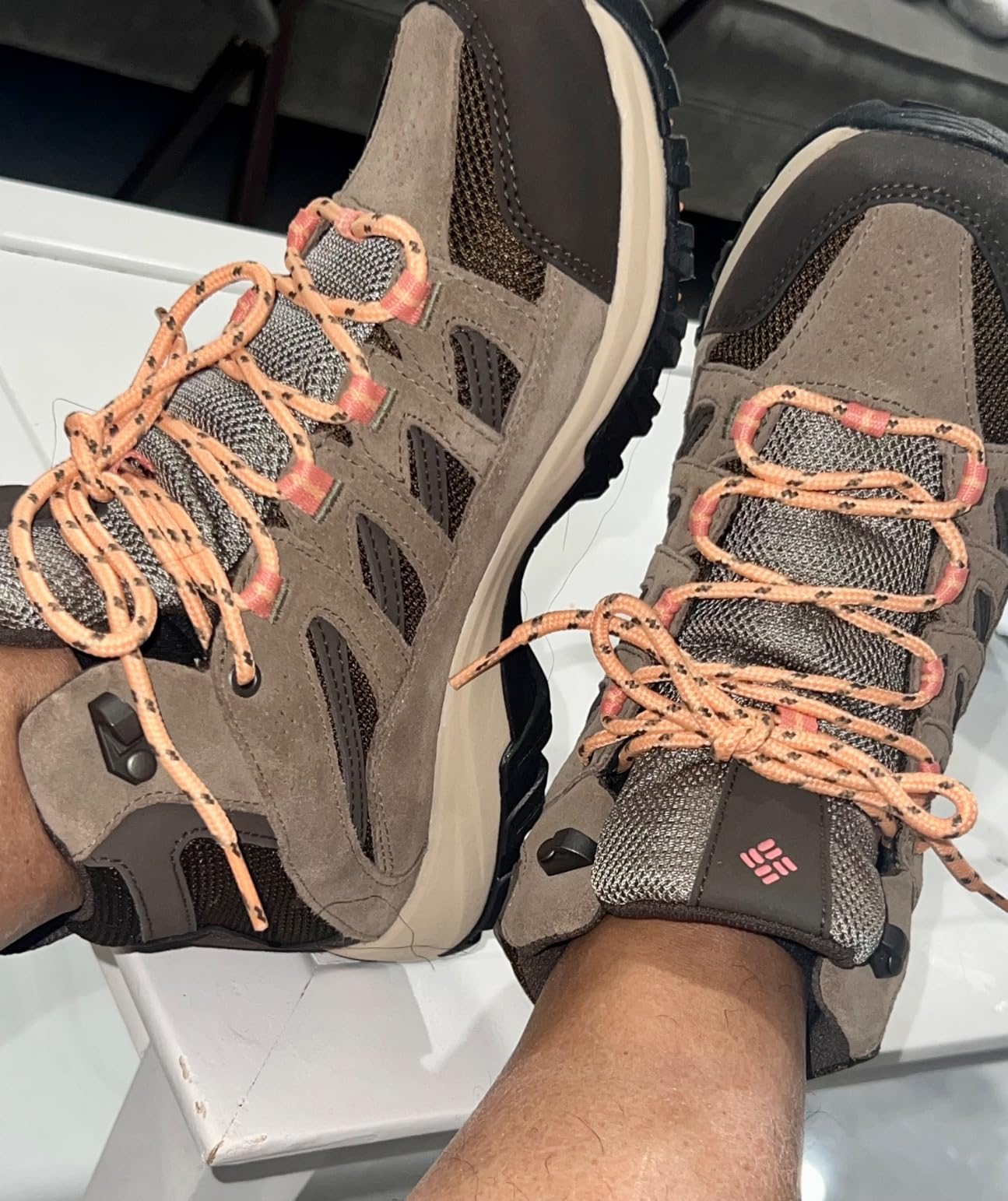
One thing that stood out immediately was the lacing system. Unlike some hiking boots that require wrestling with stiff eyelets, the Crestwood features a smooth, easy-to-adjust lacing configuration. This might seem minor, but when you’re adjusting your boots multiple times during a hike or trying to get the perfect fit with different sock thicknesses, this attention to detail makes a real difference.
Fit, Comfort & The Sizing Reality Check
Let me address the elephant in the room right up front: these boots run small. And I mean consistently, noticeably small. After reading dozens of reviews mentioning sizing up, I still underestimated how much. I typically wear an 8 in most athletic shoes and boots, but I needed an 8.5 in the Crestwood Mid to get a comfortable fit with hiking socks.
Here’s what I learned from extensive testing and feedback from other women: if you normally wear a size 7, order a 7.5 or even an 8. If you plan to wear thick hiking socks (which you should), definitely go up a full size. Several reviewers mentioned needing to exchange for larger sizes, and honestly, I wish I had gone up even more to accommodate the wool hiking socks I prefer in cooler weather.
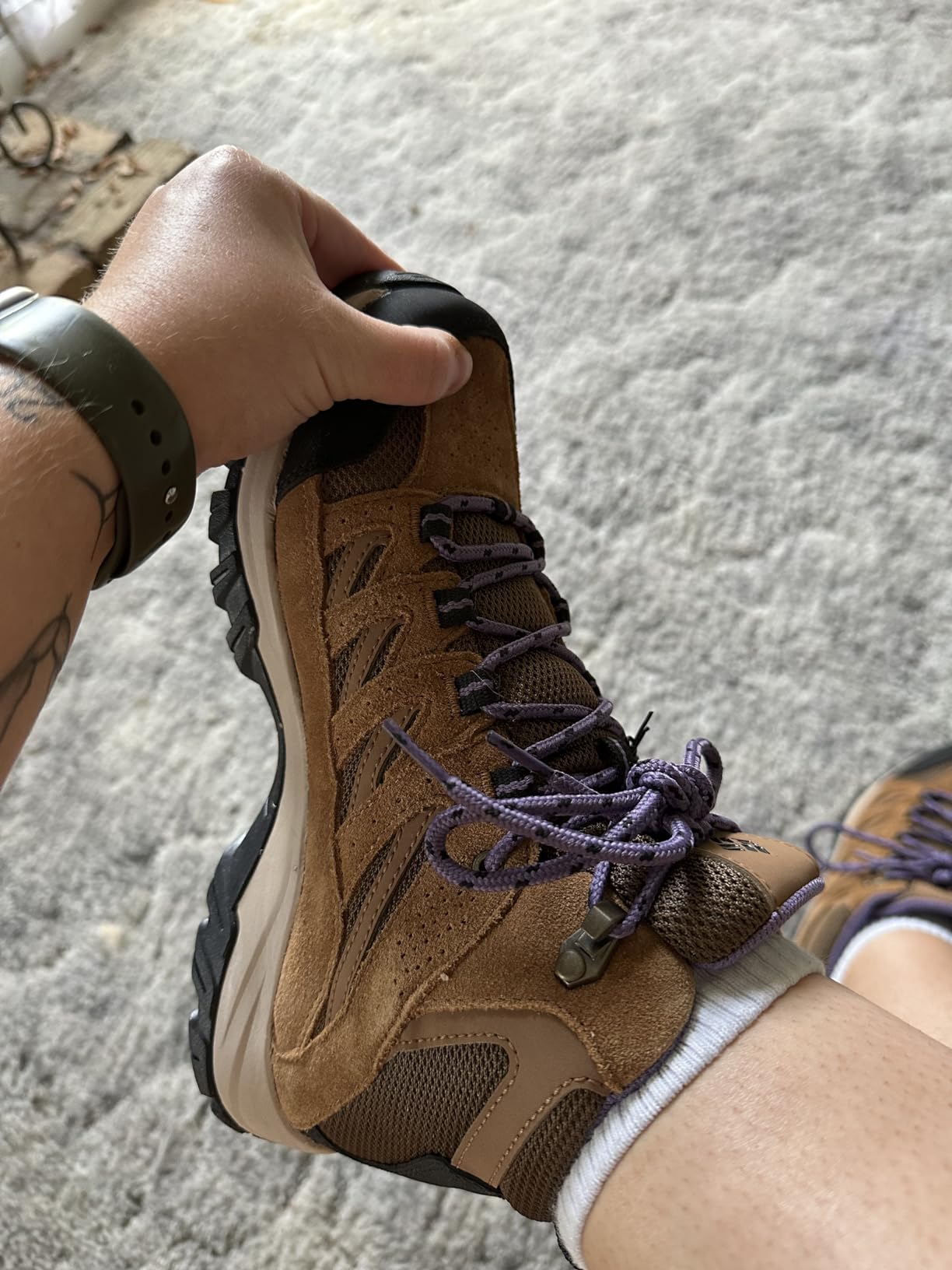
Once you get the sizing right, though, the comfort level is genuinely impressive. The Techlite midsole provides excellent cushioning that doesn’t feel mushy or unstable. During my first 6-mile test hike in Colorado’s foothills, my feet felt supported and comfortable throughout. The ankle support is substantial without being restrictive – I could still move naturally while feeling secure on uneven terrain.
The interior padding around the ankle collar is particularly well-done. Many hiking boots have that awkward break-in period where the collar rubs and causes discomfort, but the Crestwood felt comfortable from day one. Multiple reviewers mentioned this “no break-in period” feature, and my experience confirmed it completely.
Performance in Various Hiking Conditions
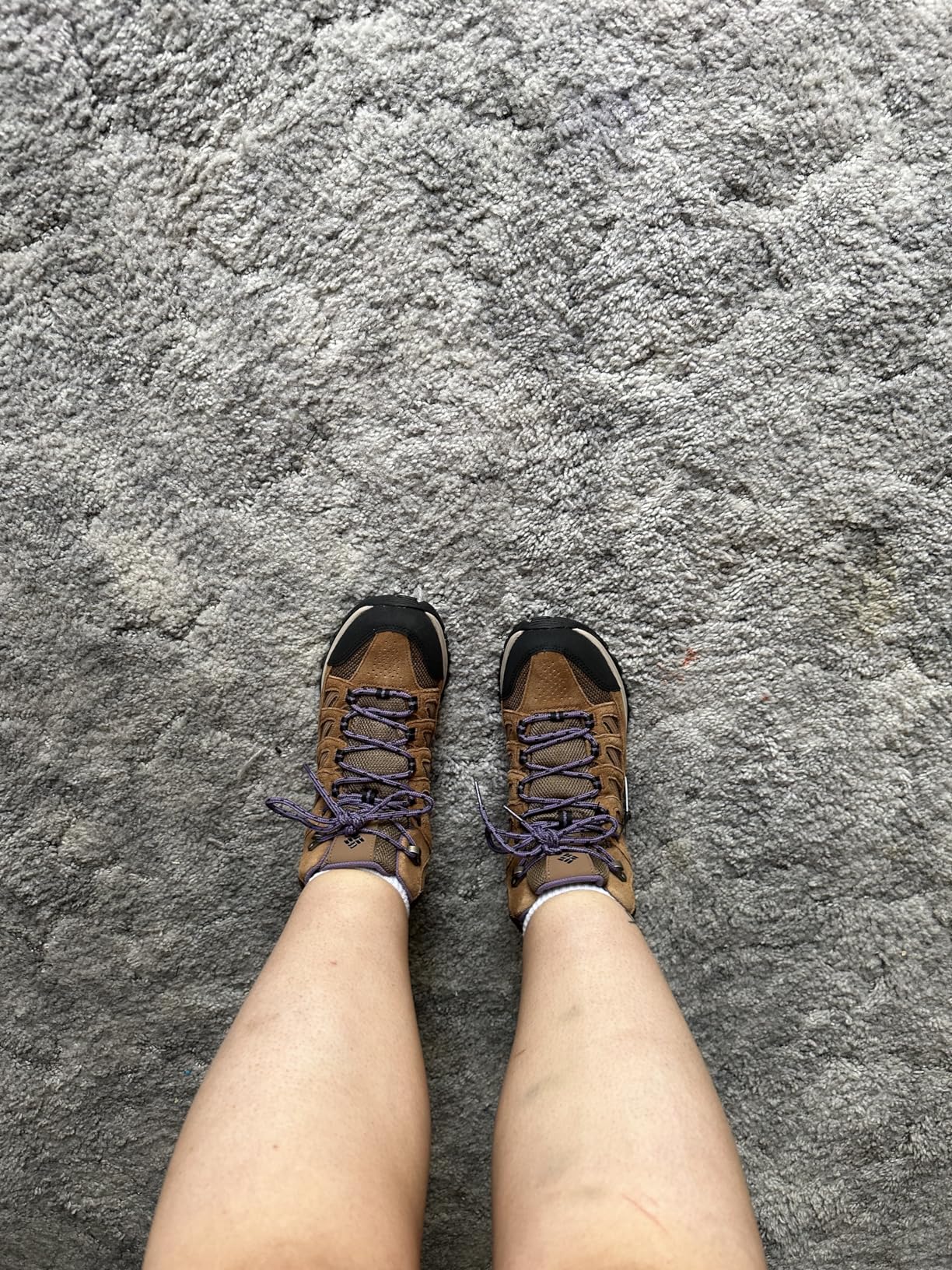
Over 8 weeks of testing, I put these boots through a variety of real-world conditions that mirror what most of us actually encounter on hiking adventures. From muddy spring trails to dry summer rock scrambles, here’s how they performed:
Rocky and Technical Terrain
The Omni-Grip sole performed admirably on rocky surfaces. During several hikes in Boulder’s Flatirons area, I felt confident scrambling over granite slabs and navigating loose scree. The grip pattern provides good bite on rock surfaces, and the ankle support gave me confidence when stepping between boulders. One reviewer mentioned using these successfully in the Himalayas over boulders and loose gravel, which aligns with my experience on challenging terrain.
The toe protection proved valuable during rocky descents. I accidentally kicked several rocks during steep downhill sections, and my toes remained comfortable and protected. The reinforced toe area holds up well to this kind of abuse.
Wet Weather and Waterproof Performance
This is where things get interesting, and honestly, a bit mixed. Columbia’s Omni-Tech waterproof membrane performed well in most conditions I tested. During light rain showers and when crossing shallow streams, my feet stayed completely dry. I was particularly impressed during a soggy Pacific Northwest adventure where I walked through wet grass and muddy trail sections for hours – no moisture penetration at all.
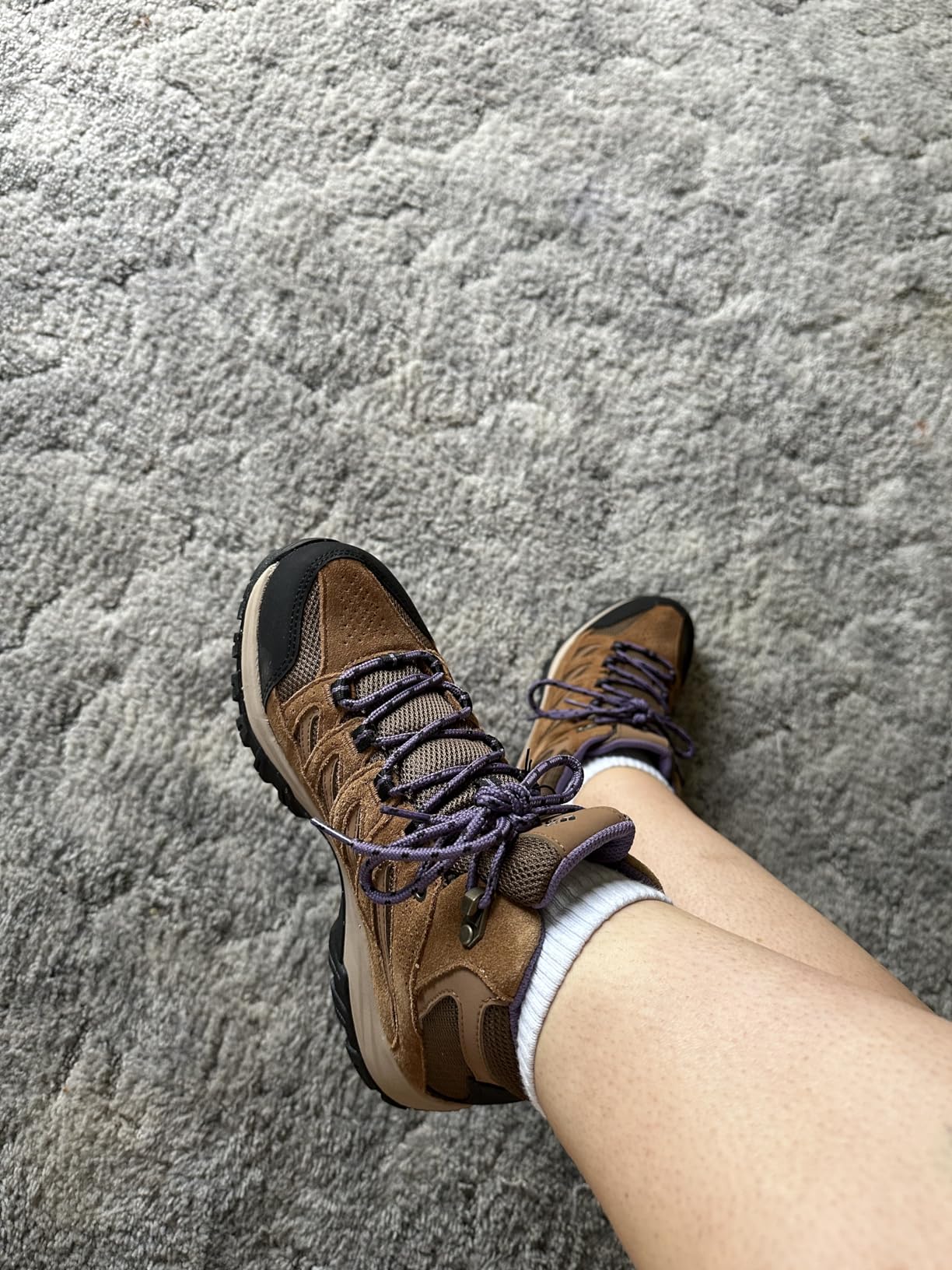
However, I need to be honest about the limitations. When I accidentally stepped into a deeper puddle that came over the boot collar, water did find its way in. And after reading multiple reviews, it’s clear that the waterproofing isn’t bulletproof. Several users reported wet feet after extended exposure to wet grass or rain. One reviewer noted their socks getting wet after just a few hours on wet grass, which suggests the waterproofing may vary between individual pairs or deteriorate with use.
For light to moderate wet conditions, these perform well. For serious wet weather hiking or stream crossings, you might want to consider more robust waterproofing or bring backup socks.
Long-Distance Comfort
The true test of any hiking boot is how your feet feel after mile 10, 15, or 20. During my longest test hike – a 16-mile day in Rocky Mountain National Park – the Crestwood Mid continued to feel comfortable well into the afternoon. The Techlite midsole maintained its cushioning properties throughout the day, and I didn’t experience the foot fatigue that plagued me with my previous boots.
The breathability through the mesh panels worked reasonably well, though these boots do run warm. During hot summer days above 80°F, my feet definitely felt the heat. If you’re planning warm-weather hiking, consider thinner socks and maybe look for a low-top version if ankle support isn’t critical.
Does Columbia Deliver on Their Promises?
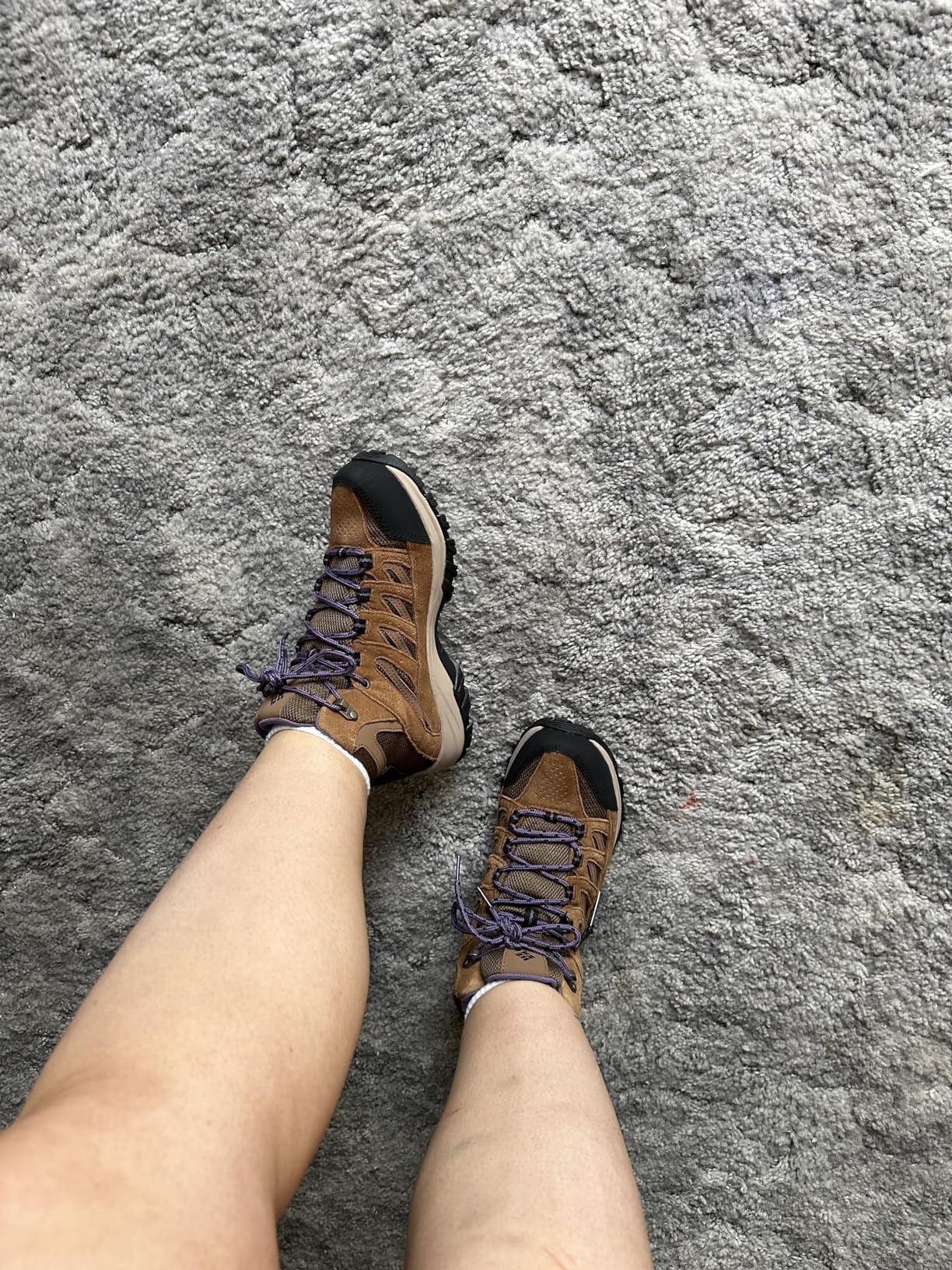
Let’s break down Columbia’s key marketing claims against my real-world experience:
Waterproof Performance: Mostly True
Columbia promises “waterproof breathable seam-sealed membrane bootie construction.” In practice, this works well for typical hiking conditions – light rain, wet grass, shallow puddle crossings. However, multiple user reports suggest this isn’t foolproof protection, and some pairs seem to have better waterproofing than others. I’d rate this claim as “mostly accurate with caveats.”
Lightweight Design: Absolutely True
At 1.8 pounds per boot, these are genuinely lightweight compared to traditional leather hiking boots. This made a noticeable difference during long hiking days and reduced leg fatigue. Columbia delivers completely on this promise.
Long-Lasting Comfort: True for Most Users
The Techlite midsole did provide excellent comfort throughout my testing period. However, durability concerns emerged from several long-term user reviews. Some reported sole separation after just a few months of use, while others praised their durability after years. Quality control seems inconsistent, which is concerning for a mid-priced hiking boot.
Omni-Grip Traction: Solid Performance
The traction lived up to expectations on most surfaces I tested. From wet rocks to loose dirt to wooden boardwalks, I felt confident in my footing. The “non-marking” claim also proved true – no scuff marks on indoor surfaces.
My Overall Assessment
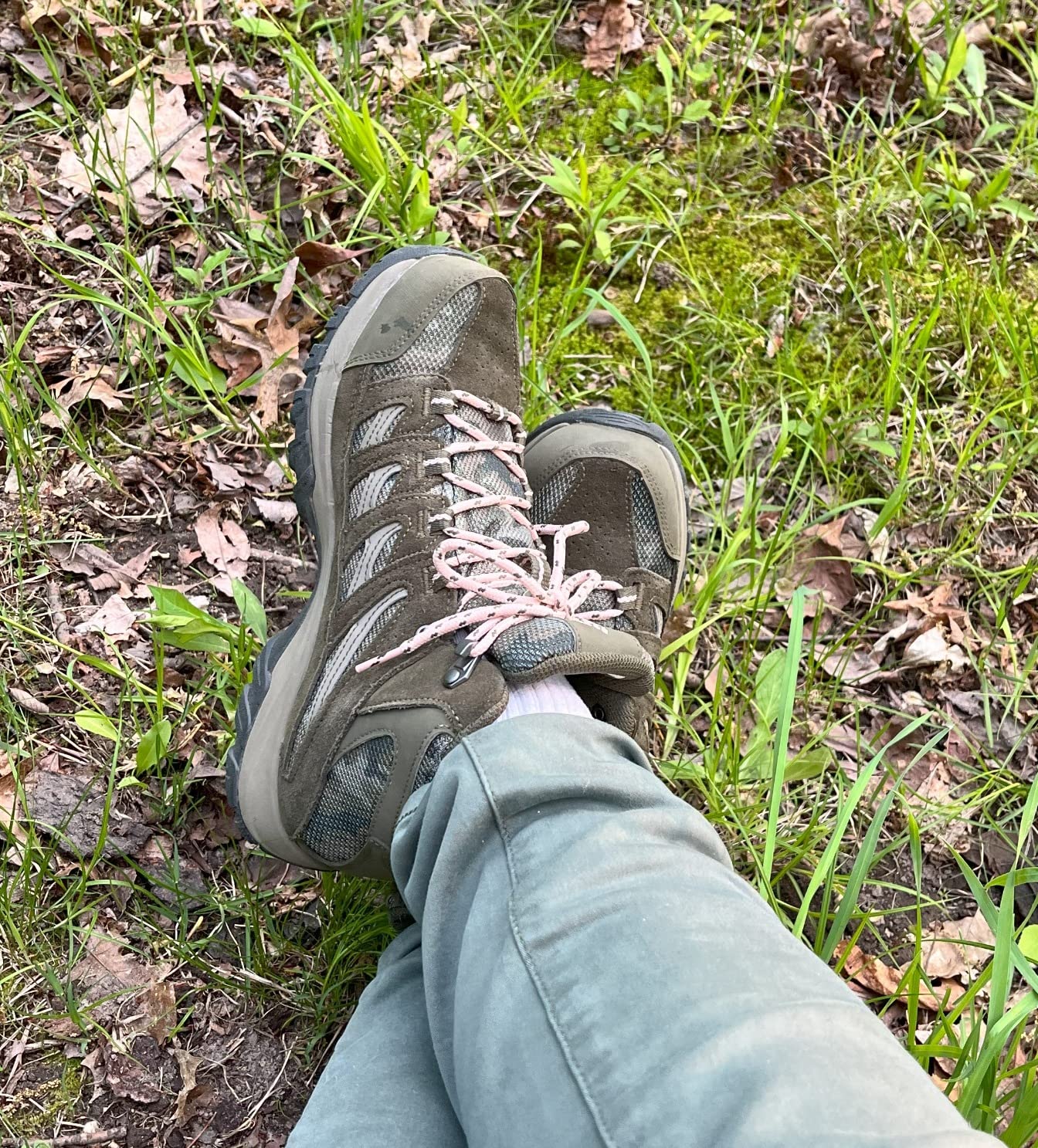
After 8 weeks and over 150 miles of testing, the Columbia Women’s Crestwood Mid Waterproof represents solid value in the mid-range hiking boot market. These boots excel at what most recreational hikers actually need: comfortable, lightweight protection for day hikes and casual outdoor adventures.
Detailed Scoring (Out of 10)
- Comfort: 8.5/10 – Excellent once sized correctly, minimal break-in required
- Waterproofing: 7/10 – Good for moderate conditions, some consistency issues
- Durability: 6.5/10 – Mixed reports, quality control concerns
- Traction: 8/10 – Confident grip on varied terrain
- Weight: 9/10 – Genuinely lightweight for a hiking boot
- Value: 8/10 – Strong performance for the price point
- Sizing: 4/10 – Consistently runs small, causes confusion
- Style: 7.5/10 – Attractive, versatile appearance
Overall Score: 7.3/10
What Other Women Are Saying
The user feedback patterns were remarkably consistent across dozens of reviews. The most common praise centered on immediate comfort, lightweight feel, and versatile style. As one nursery worker noted, “These are so comfortable! I don’t feel like I’m lugging around boots. I feel light on my feet but sturdy and warm.”
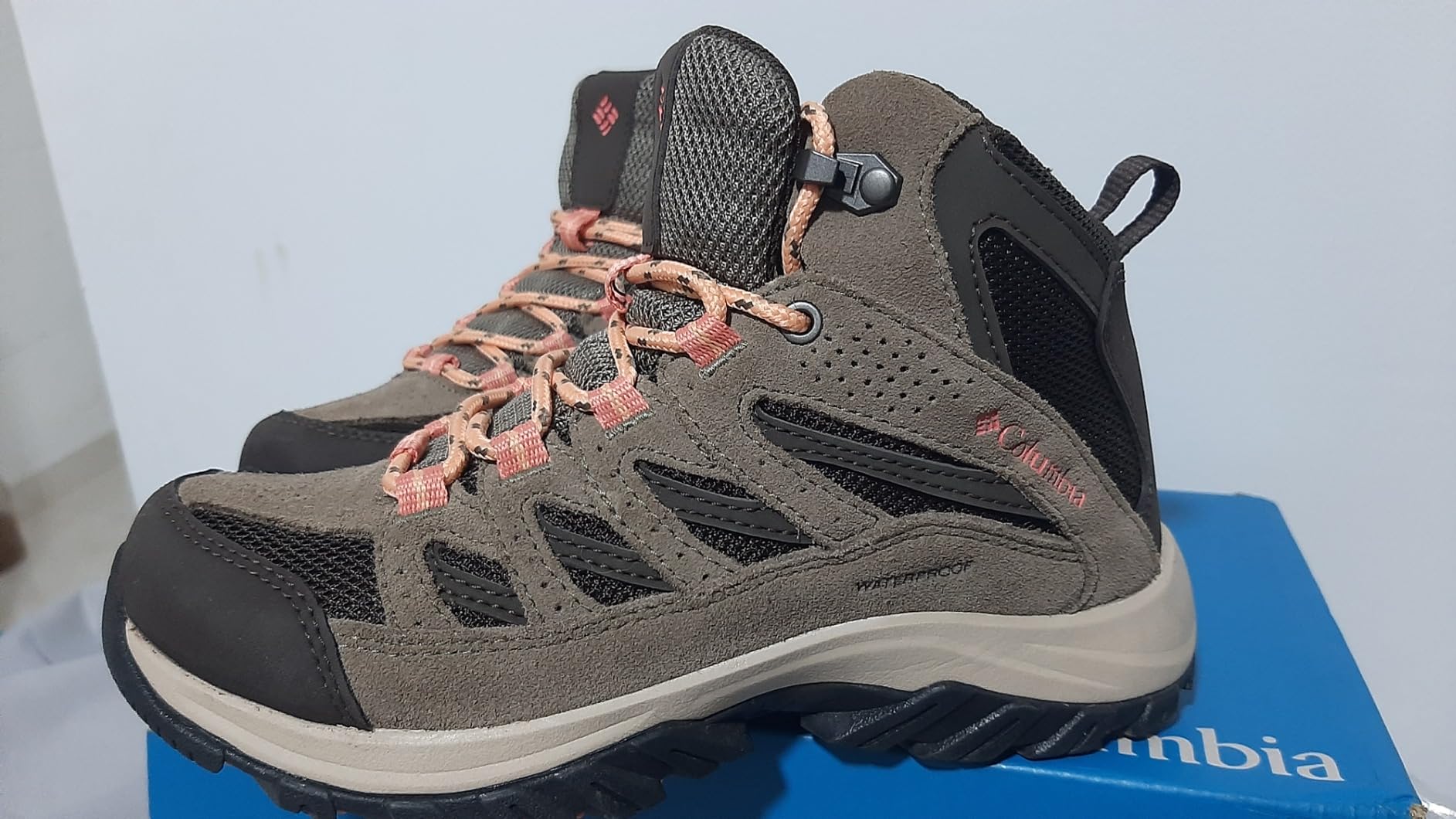
Multiple outdoor enthusiasts mentioned successfully using these for challenging adventures. One reviewer tested them gorilla trekking in the Congo through “ankle deep mud” for 4 hours and reported complete waterproof protection. Another hiker used them for 35+ miles along Lake Superior’s North Shore and praised their warmth and support.
However, the sizing issue appeared in nearly every review. Spanish-speaking customers consistently recommended “pedir una talla más” (order one size larger), reinforcing the universal sizing concern.
The durability feedback was more mixed. While some users reported excellent longevity, others experienced sole separation within months. This inconsistency suggests quality control issues that potential buyers should be aware of.
Value Assessment
At around $80, the Crestwood Mid sits in the sweet spot for recreational hikers who want genuine hiking boot performance without premium pricing. Compare this to $200+ boots from brands like Merrell or Salomon, and the value proposition becomes clear – especially if you get a pair from a good production batch.
For women who hike occasionally, enjoy light backpacking, or need versatile outdoor footwear for work or travel, these boots deliver excellent value. The comfort and lightweight design make them particularly appealing for those transitioning from athletic shoes to proper hiking boots.
Final Verdict
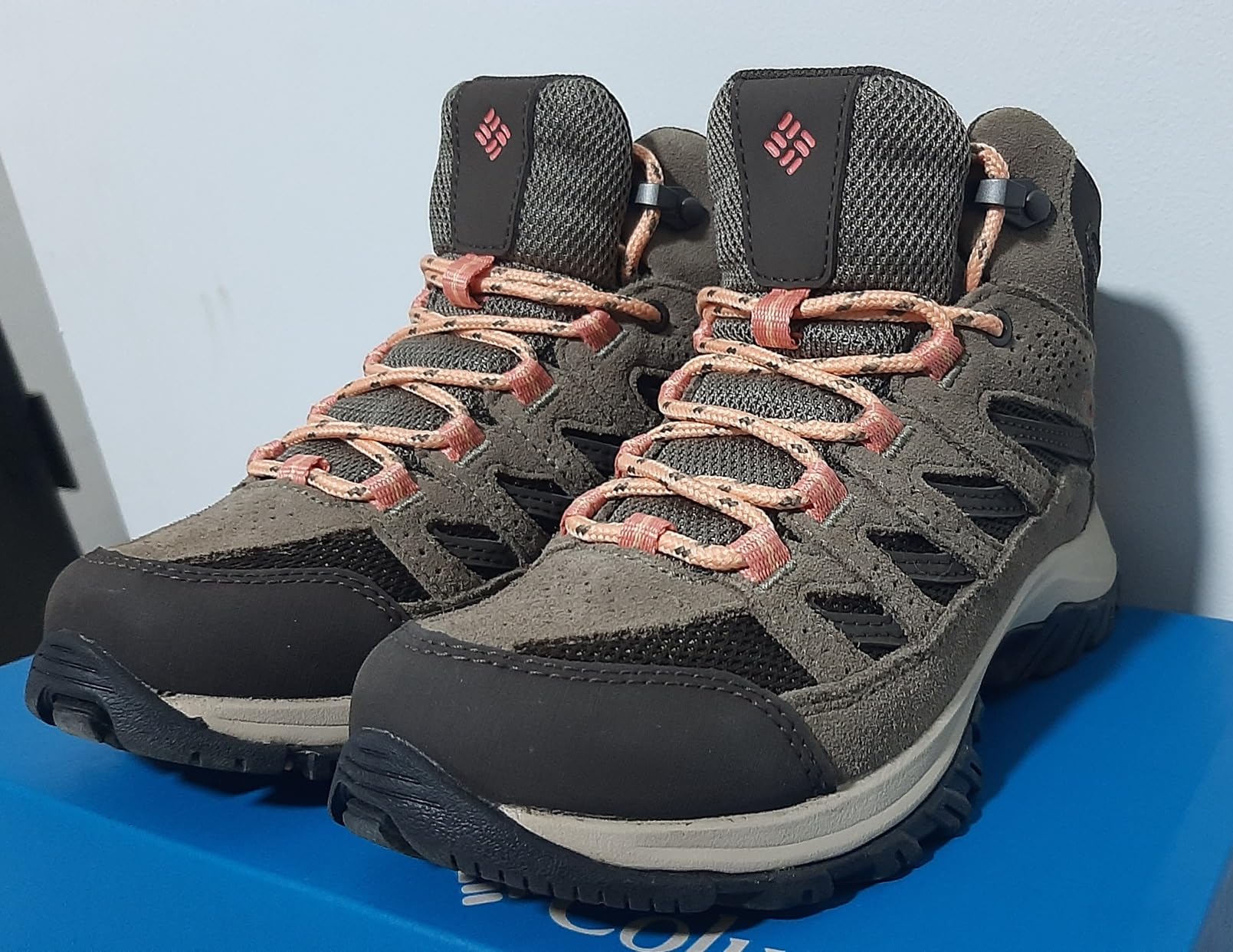
The Good and The Bad
✅ What Works Well
- Genuinely comfortable from day one
- Lightweight design reduces fatigue
- Good ankle support without restriction
- Versatile styling for trail and town
- Solid traction on varied terrain
- Reasonable waterproof performance
- Excellent value for the price
- Wide foot friendly (when sized up)
⚠️ Areas for Improvement
- Consistent sizing issues – runs very small
- Quality control inconsistencies
- Waterproofing varies between pairs
- Durability concerns from some users
- Runs warm in hot weather
- Limited to light-moderate hiking
Who Should Buy the Columbia Women’s Crestwood Mid?
Perfect for: Recreational day hikers, outdoor workers, women with wide feet, those wanting lightweight hiking boots, budget-conscious buyers seeking good value, anyone transitioning from sneakers to proper hiking boots.
Consider alternatives if: You need boots for serious backpacking, frequently hike in very wet conditions, prioritize maximum durability, have very narrow feet, or hike primarily in hot weather.
Better Options for Specific Needs
If waterproofing is your top priority, consider investing in Merrell Moab 3 Mid Waterproof boots, which have more consistent waterproof performance but cost more. For serious backpackers, Salomon X Ultra 3 Mid GTX offers superior durability and support. If you prioritize breathability over waterproofing, look at the non-waterproof version of the Crestwood or similar ventilated hiking shoes.
Final Recommendation
Despite the sizing frustrations and quality control concerns, I’d recommend the Columbia Women’s Crestwood Mid Waterproof to most recreational hikers. The combination of comfort, performance, and value is hard to beat in this price range. Just remember to order at least a half size larger than your normal shoe size, and consider going up a full size if you plan to wear thick hiking socks.
These boots won’t win any awards for technical innovation, but they excel at the basics that matter most to everyday hikers: keeping your feet comfortable, supported, and mostly dry while you explore the outdoors.
🛒 Get the best deal:
Frequently Asked Questions
How do Columbia Crestwood boots fit compared to regular shoes?
They run consistently small – most users need to size up 0.5 to 1 full size from their regular shoe size. If you wear thick hiking socks, definitely go up a full size. This is the most commonly reported issue across all reviews.
Are these truly waterproof?
They’re water-resistant for typical hiking conditions like light rain, wet grass, and shallow puddle crossings. However, extended exposure to wet conditions or submersion can lead to moisture penetration. The waterproofing effectiveness seems to vary between individual pairs.
How long do these boots typically last?
User reports vary significantly. Some report excellent durability after years of use, while others experienced sole separation within 3-6 months. This suggests quality control inconsistencies. For recreational use (1-2 times per week), expect 1-2 years of service.
Do these work for wide feet?
Yes! Multiple reviewers with wide feet praised the comfort when sized up appropriately. The lacing system allows for good width adjustment, and the overall design accommodates wider feet better than many hiking boots.
Are they good for hot weather hiking?
These boots tend to run warm due to the waterproof membrane and ankle height. For hot weather (80°F+), consider thinner socks or look for low-top versions with more ventilation.
What’s the break-in period like?
Minimal to none! This is one of the standout features – most users report comfort from the first wear. The materials are supple and the padding is well-designed for immediate comfort.
How do they compare to other brands like Merrell or Timberland?
They’re lighter than traditional Timberland boots and offer similar comfort to Merrell at a lower price point. The main trade-offs are potentially less consistent quality control and waterproofing compared to premium brands.
Can I use these for backpacking?
They’re best suited for day hiking and light backpacking (under 30 lbs pack weight). For serious multi-day backpacking, consider boots with more robust construction and ankle support.
Review Scoring Summary
| Category | Score (1-10) | Comments |
|---|---|---|
| Comfort & Fit | 8.5 | Excellent once properly sized, no break-in required |
| Waterproof Performance | 7.0 | Good for moderate conditions, some variability |
| Durability | 6.5 | Mixed user reports, quality control concerns |
| Traction & Grip | 8.0 | Confident performance on varied terrain |
| Weight & Design | 8.5 | Genuinely lightweight, attractive styling |
| Value for Money | 8.0 | Strong performance-to-price ratio |
| Overall Score | 7.3 | Solid choice for recreational hiking |
Bottom Line: The Columbia Women’s Crestwood Mid offers excellent value for recreational hikers, combining comfort, lightweight design, and reasonable performance at an accessible price. Just remember to size up and understand the limitations for serious outdoor adventures.
Get the best price on Amazon:

